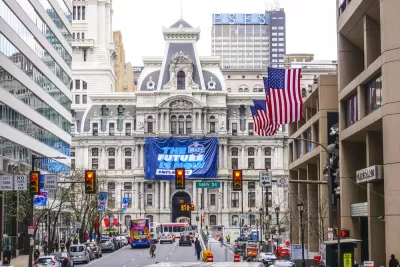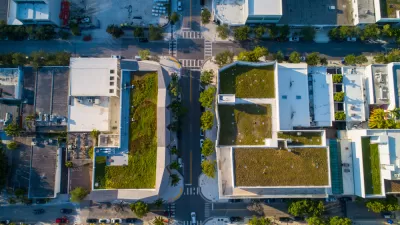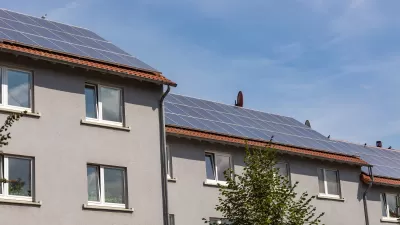Philadelphia has renewed its efforts to improve energy efficiency in non-residential building to contribute to its Paris Climate Agreement commitment.

Philadelphia Mayor Jim Kenney signed two pieces of environmental legislation this week, in support of the city's Paris Climate Agreement goals to reduce carbon emissions by 25 percent by 2025.
"The first piece of legislation creates a Building Energy Performance Program requiring non-residential buildings 50,000 square feet or larger — about 2,000 buildings — to undergo a high-energy performance inspection, submit a certification to the Office of Sustainability and conduct recommended "tune ups," or retrocommissioning," reports Katie Pyzyk.
The legislation was approved the same week as the release of the city's latest energy benchmarking report [pdf]. "The benchmarking report shows that Philadelphia's buildings experienced a 12% drop in greenhouse gas emissions and 5% decrease in energy use since 2013," according to Pyzyk.
FULL STORY: Philly mayor signs laws to boost big building efficiency, phase out dirty fuel

Study: Maui’s Plan to Convert Vacation Rentals to Long-Term Housing Could Cause Nearly $1 Billion Economic Loss
The plan would reduce visitor accommodation by 25% resulting in 1,900 jobs lost.

Alabama: Trump Terminates Settlements for Black Communities Harmed By Raw Sewage
Trump deemed the landmark civil rights agreement “illegal DEI and environmental justice policy.”

Why Should We Subsidize Public Transportation?
Many public transit agencies face financial stress due to rising costs, declining fare revenue, and declining subsidies. Transit advocates must provide a strong business case for increasing public transit funding.

Paris Bike Boom Leads to Steep Drop in Air Pollution
The French city’s air quality has improved dramatically in the past 20 years, coinciding with a growth in cycling.

Why Housing Costs More to Build in California Than in Texas
Hard costs like labor and materials combined with ‘soft’ costs such as permitting make building in the San Francisco Bay Area almost three times as costly as in Texas cities.

San Diego County Sees a Rise in Urban Coyotes
San Diego County experiences a rise in urban coyotes, as sightings become prevalent throughout its urban neighbourhoods and surrounding areas.
Urban Design for Planners 1: Software Tools
This six-course series explores essential urban design concepts using open source software and equips planners with the tools they need to participate fully in the urban design process.
Planning for Universal Design
Learn the tools for implementing Universal Design in planning regulations.
Smith Gee Studio
Alamo Area Metropolitan Planning Organization
City of Santa Clarita
Institute for Housing and Urban Development Studies (IHS)
City of Grandview
Harvard GSD Executive Education
Toledo-Lucas County Plan Commissions
Salt Lake City
NYU Wagner Graduate School of Public Service





























